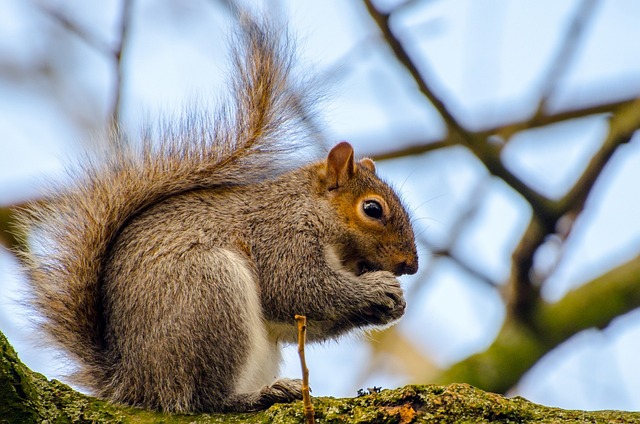
Rat and rodent control is essential for several reasons, as these pests can pose significant threats to both human health and property. Understanding the importance of rat and rodent control can help us appreciate the need to address infestations promptly and effectively.
Here are some key reasons why rat and rodent control is crucial:
- Disease Transmission: Rats and rodents are known carriers of various diseases that can be transmitted to humans. They can spread diseases through their droppings, urine, and bites. Some of the diseases associated with rodents include leptospirosis, hantavirus, salmonellosis, and rat-bite fever. These illnesses can range from mild to severe, and in extreme cases, they can even be fatal.
- Contamination of Food and Water: Rats and rodents are notorious for contaminating food supplies in homes, restaurants, and food storage facilities. Their urine, feces, and hair can contaminate surfaces and food items, leading to food poisoning and other health issues when consumed.
- Property Damage: Rodents have a strong need to gnaw on things to keep their teeth from growing too long. As a result, they can cause significant damage to structures, electrical wires, pipes, and insulation. This can lead to expensive repairs and potential fire hazards due to exposed wiring.
- Allergies and Asthma Triggers: Rodent dander and urine can trigger allergies and asthma symptoms in sensitive individuals. People with pre-existing respiratory conditions may experience worsened symptoms in the presence of rodents. .
- Breeding and Population Growth: Rats and rodents have rapid breeding rates, meaning a small infestation can quickly escalate into a large one if not controlled early. The larger the infestation, the more challenging and costly it becomes to eliminate.
- Psychological Impact: The presence of rodents in a living or working space can cause significant psychological distress and discomfort. Fear and anxiety related to rodents can affect people's daily lives and well-being.
- Ecosystem Impact: In some cases, invasive rodent species can harm local ecosystems by competing with native wildlife for resources or preying on native species.
Given these potential risks, rat and rodent control is not just a matter of convenience; it is a critical aspect of maintaining a healthy and safe living environment. Early detection and professional intervention are vital to effectively address rodent infestations and prevent further problems. Homeowners, property managers, and businesses should take proactive steps to prevent rodents from entering buildings, and they should seek professional assistance if they suspect an infestation is present. Integrated Pest Management (IPM) practices that emphasize prevention, sanitation, and eco-friendly pest control methods can be effective in keeping rat and rodent populations under control while minimizing environmental impacts.
The Process of Rat and Rodent Control: Step-by-Step Extermination Methods
The process of rat and rodent control involves several steps to effectively exterminate and prevent further infestations. Here is a step-by-step guide to rat and rodent control, including common extermination methods:
- Step 1: Inspection and Identification: A thorough inspection of the property is crucial to identify the extent of the infestation and the species of rodents involved. The technician will look for signs of rodent activity, such as droppings, gnaw marks, tracks, and burrows. Identifying the type of rodent helps in tailoring the extermination approach.
- Step 2: Sanitation and Prevention: Before starting the extermination process, it's essential to address the factors that attract rodents to the property. This includes proper sanitation, sealing entry points, and eliminating food and water sources. Removing clutter and ensuring garbage is stored in tightly sealed containers are also important preventive measures. .
- Step 3: Extermination Methods: There are several extermination methods that pest control professionals may use, depending on the severity of the infestation and the specific circumstances. Some common methods include:
- Trapping: Live traps or snap traps can be used to catch and remove rodents from the property. Live traps allow for the humane capture and release of rodents in suitable areas away from human habitation.
- Baiting: Rodenticides, or rat poisons, are often used as bait to kill rodents. These baits are designed to be attractive to rodents but should be used with caution, especially in households with children or pets. The location of the baits is carefully chosen to minimize accidental exposure to non-target animals. .
- Rodent Birth Control: In some cases, pest control professionals may use birth control baits, which contain compounds that disrupt the reproductive capabilities of rodents. This method can help reduce the rodent population over time without directly harming them. .
- Step 4: Exclusion and Sealing Once the rodents have been eliminated, the focus shifts to preventing future infestations. Pest control technicians will identify and seal entry points that rats and rodents use to access the property. Common entry points include gaps in walls, vents, pipes, and openings around doors and windows. .
- Step 5: Follow-Up and Monitoring Even after the initial extermination, it's essential to conduct follow-up visits to ensure that the infestation has been effectively dealt with and to address any new rodent activity. Regular monitoring is crucial to detect and address any re-infestation early on. .
- Step 6: Educating the Property Owner A significant aspect of rodent control is educating the property owner or occupants about proactive measures to prevent future infestations. This includes maintaining good sanitation practices, identifying signs of rodent activity, and understanding the importance of prompt action if rodents are detected. .
It's important to note that rodent control should be carried out with safety and environmental considerations in mind. Whenever possible, humane methods and integrated pest management practices should be prioritized to minimize harm to both humans and the ecosystem.
